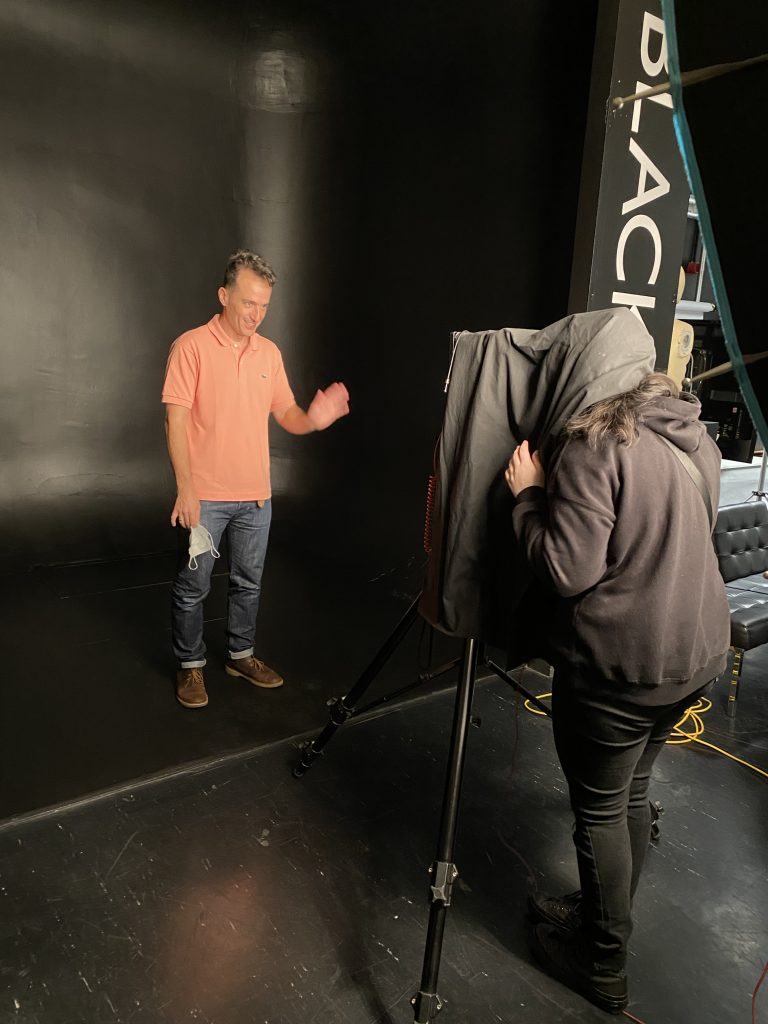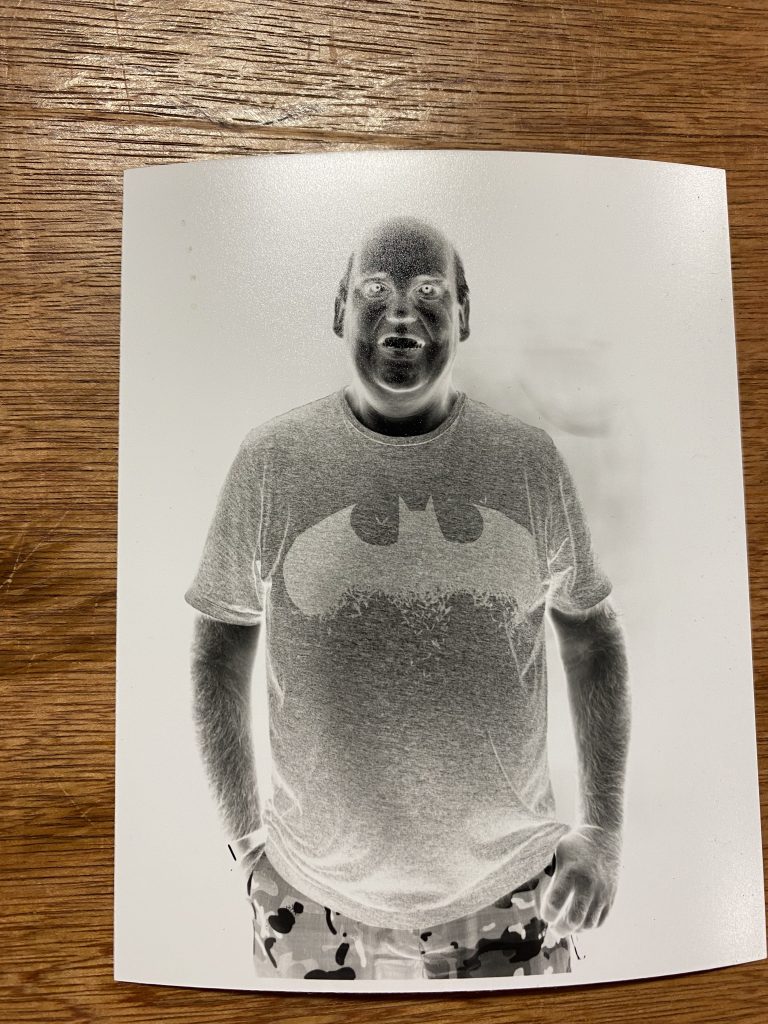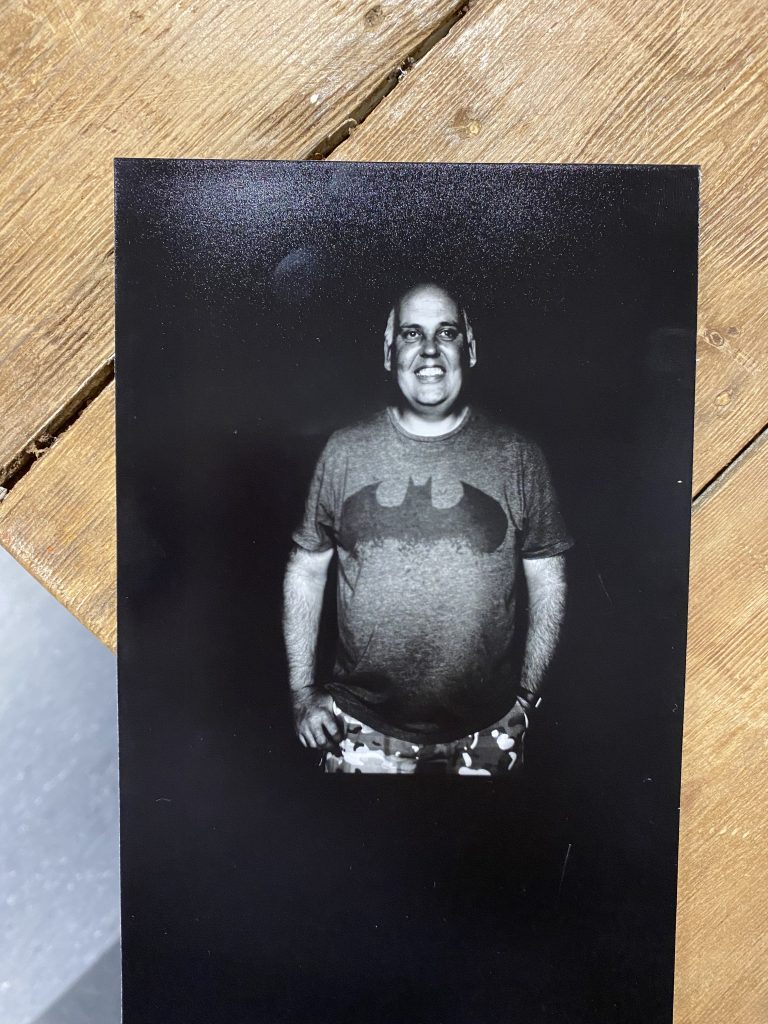Not a crossword clue or bottles of beer on the wall, but my first day on campus at the University Of Wolverhampton, it’s going to take me six years to complete the BA(Hons) in Photography because I’m doing it part time.
What an amazing day it was.
Induction Day
Monday we had a few online sessions where we were introduced to Maggie Ayliffe, Head Of School Of Art to discuss how the school worked and how it knitted together all forms of art and ideas. This was followed in the afternoon by a Health & Safety presentation, mainly revolving around fire safety and a good reminder to everyone that doesn’t usually think about H&S that the School Of Art can be a dangerous place to be if you’re not concentrating on what you’re doing.
First Day Proper
Tuesday though was the first day on campus as a student and I travelled to the Molineux stadium to park my car and then walked up to the George Wallis building, also known as the School Of Art building.

With the timetabled meeting with course leader, Dr Euripides Altintzoglou, scheduled for 10am I arrived at 9am and sat in the foyer of the building trying to set up my iPad on the wifi. I scoped out the room I needed to be in and got in there with 20 mins to spare, stayed in there for 15 mins before realising it was a glass & ceramics group then went and found out it had changed to an 11am start, no problem, happy to wait and chill out.
I had a lovely chat with one of the staff there who is also completing a Masters in Fine Art and she showed me on her phone her Covid Pandemic inspired scaffold box which is soon to be exhibited in Walsall Gallery.
After sitting down again and checking my Instagram for other people to follow who are on the course with me, Dr Altintzoglou came and sat opposite, waiting for the ceramic group to leave the lecture theatre. He is a lovely chap and we had a chat about what I wanted to get out of a photography degree course and he explained all the wonderful equipment they have that can be used by the students.
Into Theatre
11am and we set up in the lecture theatre to meet the remainder of the photography students and there is a range of people in it, I think around 15 in total. There are around five mature students in that too. Everyone seemed friendly and nice if a little nervous, as was I. Generally, I’m rubbish at meeting new people like this but try and bluff it out without being over the top. We had a great chat about the contents of the course and what we’d be up to over the next three years (or six for us part timers), it sounded exciting and full of stuff to learn.
I’ve never been a big explainer of photographs I like or have taken, I know if I like something and can explain it if it’s an obvious thing like a humorous scene or some geometric pattern on a building, but finding the words to explain the feelings and emotions brought to the fore by an image is something I’d shied away from in the past. It sounds like this course will help me vocalise my feelings which I’m also looking forward to be able to do.
Stop….. Carry On
Once this session was finished we split up and I went with the older part of the class for a free cup of coffee at the coffee shop on the main campus with the remainder of the mature students. We discussed reasons for attending the course and found that we’ve got some similar skills and interests, music, circus skills, shooting to name but a small number. There are some wildly opposing views in this small selection of the course but hopefully we’ll all get on.
Time to go back for the afternoon session and it was in the studio area of the building where we had another chat, introduced ourselves to the group with a precis on why we were there and then to the practical part of the day. Euripides and Dan the technician were helping us to take photos of each other with a 5×4 camera in the black scoop, using a way huuge parabolic flash.
StuStuStudio
In pairs we had to set up the shot using the focus knob on the camera and insert the Resin Coated paper (already in the film carrier) into the rear of the camera, cock the shutter, and then hit the release cable, watch the flash go off and then switch places. I was paired up with a young woman and when I tried to take her image I realised I’d need my glasses to check focus on the rear glass plate, then they steamed up under the black cloth but we managed to get a photo off each.
When Euripides was using the light meter to calculate the aperture of the camera, I wondered about the calculation he was doing as it normally involves ISO (on film or kind of with digital) so I quizzed him on the ISO of the RC Paper being used, I was shocked to find out that it was around 3. An ISO of 100 is usually used on the brightest of sunny days as there’s so much light in abundance that you need very little time to expose the film/sensor, so that must mean that an even lower ISO would need significantly more light on it to expose it correctly, hence the massive parabolic flash I guess.

Darkroom Adventure
Carting these carriers to the dark room for Dan to help us develop was exciting for me, my partner on this task had done it before but was still seemingly happy to be repeating it again. Once in the dark room we had a brief reminder of handling (or not handling) the chemistry and then the 5×4 pieces of paper went into the developer for a minute, followed by 15 seconds in the stop and then a minute in the fix fluid before being washed in running water for 2 minutes. Sliding the seemingly blank paper into the developer and seeing a negative image coming out was mind blowing for me as I’d never witnessed the process before.

Once the images had been developed into a paper negative and dried through the big dryer, a machine much like a laminator to my new eyes, we took them over for the reversal part of the process. Dan showed us the enlarger that he’d use and then took the 5×4 and placed it in contact with the emulsion side of a large piece of RC paper inside a perspex wallet. He set the enlarger on for around 8 seconds and then once developed we headed to the developer, stop, fix and wash again. This time, the light Dan had shone through the back of the paper negative had changed the chemicals on the paper, apart from the areas of darkness on the negative. One comparable process to me was similar to masking the area of a PCB off with a transparency before you bombard it with UV, then wash the exposed copper off with acid.
Enlarging and Developing
In the dark room when Dan switched on the enlarger and a big bright light projected down from the head and then onto the paper in the perspex wallet, I was wondering why this big light was allowed to be on in the dark room. Obvious now it’s been explained to me, but light travels in straight lines so very little light would have come away from the process to damage any other work going on in the room.
In this case though the exposed parts went black and then once out of the drier and carried into the white light outside you could see the details in the image. I felt a bit bad for my partner in this task as her image came out with some strange lens flares and a dark overall image which wasn’t as clear as some of the others. There were also other images that came out similarly over or under exposed but Dan and Euripides explained that we did it with very little time, planning and expertise so we should be pleased. I know I certainly was, it was outstanding to see this process first hand.

After a discussion on the quality of the images, ways to improve and lots of tips and hints were at 4pm and time to leave. I picked up my image and will look after this as it’s the first ever picture I’ve had developed without sending it off to Truprint or whoever. I know the negative wasn’t a film negative, but a paper negative and that’s why i’m so gobsmacked that the detail was so good in the image.
Personal Tutor Time
Today (Wednesday) saw all L4 First Years in the School Of Art meet online with our personal tutors and it was a very entertaining 90 mins with plenty of helpful advice and guidance on what we need to be doing to succeed. Some of that was experiment, try left-field ideas, if you fail it will help you build up a skill set for the next years 2 and 3.
People were having a laugh and I feel that all of the staff in the University Of Wolverhampton Arts Faculty are going to support us and help us to make the most of this time in university. I’m looking forward to the next few years, even more now!!
If you’re an alumni of Wolverhampton School Of Art, feel free to leave a message below with any lessons you think I should know that might help me for the rest of the course!!!
Be First to Comment